
Naoshima Island: Japan's Art Haven
Discover Naoshima Island: A fusion of art, nature, and serenity in Japan's Seto Inland Sea, perfect for art enthusiasts and travelers seeking a unique cultural experience.
Naoshima Island, located in Japan's Seto Inland Sea, is a hidden gem that has transformed into an art lover's paradise. Known for its stunning blend of contemporary art, architecture, and natural beauty, the island offers a unique experience for visitors. The island is home to the Benesse Art Site, which includes several museums, art installations, and sculptures, making it a cultural hotspot. Visitors can explore the Chichu Art Museum, designed by famous architect Tadao Ando, where you can appreciate the works of Claude Monet, James Turrell, and Walter De Maria. The museum itself is a piece of art, constructed mostly underground to blend with the surrounding landscape. Another must-visit is the Art House Project, where traditional houses have been converted into art spaces, merging the island's local culture with contemporary art. Aside from the art, Naoshima offers beautiful beaches and scenic spots perfect for relaxation. The island's tranquil atmosphere is complemented by charming local cafes and restaurants where you can enjoy fresh seafood and local delicacies. A visit to Naoshima is not just a trip but an immersive experience that combines artistic innovation with serene island life.
Local tips in Naoshima Island
- Plan to stay overnight to fully immerse yourself in the art and culture, as a day trip may not be enough.
- Rent a bicycle to explore the island at your own pace and enjoy the scenic views.
- Visit during the weekdays to avoid the larger weekend crowds.
- Check the opening hours of museums and art sites in advance, as they may vary.
- Carry cash, as some of the smaller cafes and shops may not accept credit cards.
Naoshima Island: Japan's Art Haven
Naoshima Island, located in Japan's Seto Inland Sea, is a hidden gem that has transformed into an art lover's paradise. Known for its stunning blend of contemporary art, architecture, and natural beauty, the island offers a unique experience for visitors. The island is home to the Benesse Art Site, which includes several museums, art installations, and sculptures, making it a cultural hotspot. Visitors can explore the Chichu Art Museum, designed by famous architect Tadao Ando, where you can appreciate the works of Claude Monet, James Turrell, and Walter De Maria. The museum itself is a piece of art, constructed mostly underground to blend with the surrounding landscape. Another must-visit is the Art House Project, where traditional houses have been converted into art spaces, merging the island's local culture with contemporary art. Aside from the art, Naoshima offers beautiful beaches and scenic spots perfect for relaxation. The island's tranquil atmosphere is complemented by charming local cafes and restaurants where you can enjoy fresh seafood and local delicacies. A visit to Naoshima is not just a trip but an immersive experience that combines artistic innovation with serene island life.
When is the best time to go to Naoshima Island?
Iconic landmarks you can’t miss
Chichu Art Museum
Explore the Chichu Art Museum on Naoshima Island, where modern art meets serene nature in a stunning architectural masterpiece.

Benesse House Museum
Experience the seamless blend of modern art and nature at the Benesse House Museum on Naoshima Island, a cultural gem in Japan's Seto Inland Sea.
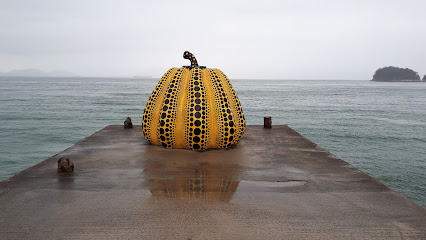
Teshima Art Museum
Immerse yourself in contemporary art and nature at the Teshima Art Museum, a modern masterpiece on Teshima Island, Japan.

Yellow Pumpkin
Discover the iconic Yellow Pumpkin by Yayoi Kusama on Naoshima, a vibrant symbol of contemporary art amidst stunning seaside views.

Lee Ufan Museum
Discover the serene beauty of modern art at the Lee Ufan Museum on Naoshima Island, where nature and creativity intertwine.

Naoshima Public Bath I Love Yu
Experience the harmony of art and relaxation at Naoshima Public Bath I Love Yu, a unique Japanese sento in the heart of Naoshima.

Ando Museum
Explore the Ando Museum on Naoshima Island, where contemporary art meets stunning architectural design in a tranquil setting.

Red Pumpkin
Explore the vibrant Red Pumpkin sculpture by Yayoi Kusama in Naoshima, a must-visit destination for art lovers and tourists seeking unique experiences.

Art House Project: Minamidera
Discover the Art House Project: Minamidera, where modern art meets traditional Japanese architecture in a serene Naoshima setting.
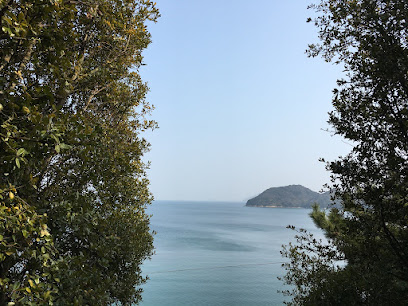
Benesse House Park
Experience the perfect fusion of art and nature at Benesse House Park, a unique hotel located on Naoshima Island, known for its contemporary art installations.

Art House Project: Haisha
Explore the Art House Project: Haisha, where traditional Japanese architecture harmonizes with contemporary art on Naoshima Island.

Kon'nichiwa
Discover the artistic charm of Naoshima at Kon'nichiwa, where exceptional coffee meets a serene, creative ambiance.
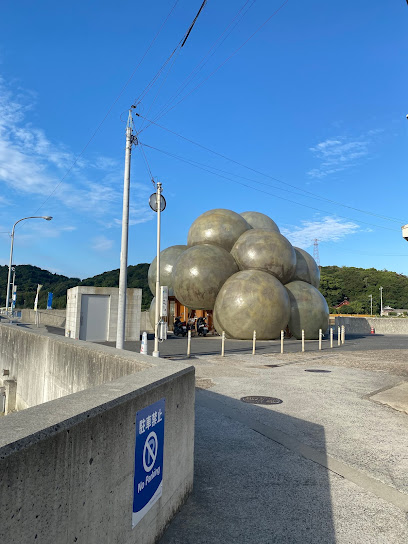
Mikazukishoten
Discover Mikazukishoten in Naoshima, where exquisite coffee meets local craftsmanship in a charming and artistic setting.
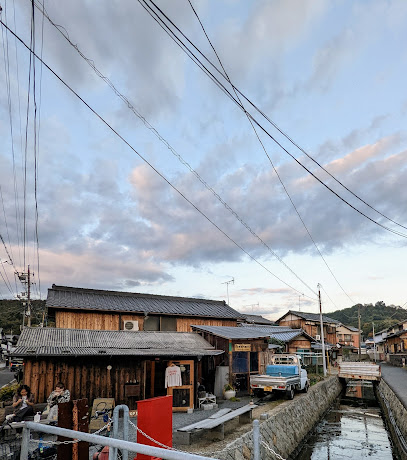
Akaito Coffee
Discover Akaito Coffee in Naoshima: a cozy café blending exquisite coffee, magazines, and used books in a tranquil artistic setting.

Okonomiyaki Umikko
Experience the authentic flavors of Japan at Okonomiyaki Umikko, Naoshima's top spot for delicious okonomiyaki in a charming atmosphere.

Unmissable attractions to see
Kankakei Ropeway
Experience breathtaking views from the Kankakei Ropeway, a scenic cable car ride in Shodoshima showcasing stunning landscapes and rich biodiversity.

Teshima Art Museum
Explore the Teshima Art Museum, where modern art meets the serene landscapes of Teshima Island in Japan's Seto Inland Sea.

Tonosho port Tourist centre
Discover the charm of Kagawa at Tonosho Port Tourist Centre, your go-to spot for local crafts and culinary delights in Japan.
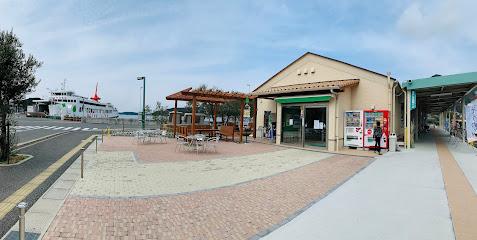
Ando Museum
Explore the Ando Museum in Naoshima, where contemporary art meets breathtaking architectural design in a serene island setting.
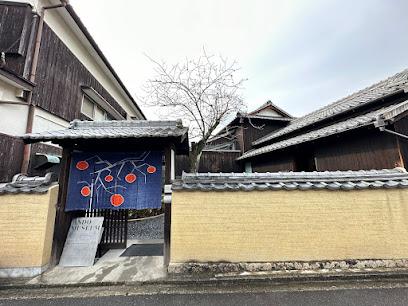
Ando Museum
Explore the Ando Museum on Naoshima Island, where contemporary art meets stunning architectural design in a tranquil setting.

Kankakei Ropeway Kountei Station
Experience breathtaking views and natural beauty aboard the Kankakei Ropeway on Shodoshima, a scenic journey above the Seto Inland Sea.

Chōshi valley Monkey Kingdom Natural Zoo
Discover the lively Japanese macaques at Chōshi Valley Monkey Kingdom Natural Zoo, a family-friendly destination in scenic Kagawa, Japan.

Kasaneiwa
Explore the captivating beauty and rich history of Kasaneiwa, a remarkable natural and cultural landmark in Kagawa, Japan.

心臓音のアーカイブ Les Archives du Cœur
Discover the profound connection between art and humanity at Les Archives du Cœur, a unique museum experience in Teshima, Japan.

Shodoshima Olive Garden
Discover the beauty and flavors of Shodoshima at the Olive Garden, where nature meets culinary excellence in a serene setting.

Walking Ark
Discover Walking Ark in Takamatsu, an open-air museum blending stunning sculptures with the tranquility of nature for an unforgettable artistic experience.

Chinu - the Black Sea Bream of Uno
Explore Chinu in Tamano, Okayama - a stunning blend of art and nature celebrating the Black Sea Bream through recycled sculptures by the sea.

Art House Project: Go'o Shrine
Explore the harmonious blend of tradition and contemporary art at Go'o Shrine in Naoshima, a unique destination for art and culture enthusiasts.

Shihōzashi Sightseeing Tower
Discover breathtaking views and cultural richness at Shihōzashi Sightseeing Tower, a perfect blend of nature and tranquility in Shodoshima, Japan.

Honmura Lounge & Archive
Explore the Honmura Lounge & Archive on Naoshima - a unique blend of art, culture, and local crafts in a serene setting.

Essential places to dine
Cafe Salon Nakaoku
Experience tranquility at Cafe Salon Nakaoku, where quality coffee meets fresh salads amid Naoshima's artistic charm.

Aisunao
Discover Aisunao in Naoshima: Delight in creative vegan dishes amidst Japan's stunning art island.

Okonomiyaki Umikko
Savor authentic okonomiyaki at Okonomiyaki Umikko on Naoshima Island—where every bite celebrates local flavors and culinary artistry.

Ishii Shouten
Experience authentic handmade udon noodles at Ishii Shouten in Naoshima - where tradition meets taste in every bowl.

Cin.na.mon
Discover authentic Japanese flavors in an artistic setting at Cin.na.mon, Naoshima's charming café and restaurant.

Raumen Tsumu
Discover the authentic taste of Japan with delicious ramen at Raumen Tsumu on Naoshima Island.

Tee's DELI GROCERY
Discover the flavors of Naoshima at Tee's DELI GROCERY, where great food meets artistic vibes in an unforgettable dining experience.

Yuunagi
Discover Yuunagi: A Seafood Haven on Naoshima Island Offering Authentic Japanese Teishoku Cuisine.

NaoPAM/ Shima-Shoku-Do Miyanda
Experience authentic Japanese cuisine at NaoPAM in Naoshima - where tradition meets flavor in a cozy atmosphere.

New Olympia (sushi)
Experience authentic sushi in Naoshima at New Olympia – where fresh ingredients meet traditional Japanese artistry.

APRON CAFE
Experience culinary delights amidst the artistic beauty of Naoshima at APRON CAFE - where every meal tells a story.

Ebisukamo
Discover authentic Japanese cuisine at Ebisukamo on Naoshima Island—where local flavors meet serene beauty.

Chikurin
Experience authentic Japanese cuisine at Chikurin in Naoshima, where tradition meets flavor in a cozy izakaya setting.

Terrace Restaurant
Experience fine dining at Terrace Restaurant in Naoshima—where art meets exquisite cuisine amidst breathtaking views.

Little Plum
Experience the essence of Naoshima at Little Plum, where local flavors meet warm hospitality in a serene setting.

Markets, malls and hidden boutiques
Chichu Art Museum
Explore the Chichu Art Museum on Naoshima Island - a masterpiece of modern architecture and art in harmony with nature.
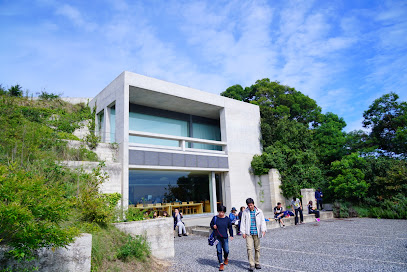
Benesse House Museum
Explore the Benesse House Museum in Naoshima, where modern art meets the serene beauty of nature, creating an unforgettable cultural experience.

Yellow Pumpkin
Discover the vibrant Yellow Pumpkin by Yayoi Kusama on Naoshima, a stunning fusion of contemporary art and natural beauty.

Lee Ufan Museum
Immerse yourself in the serene beauty of modern art at the Lee Ufan Museum in Naoshima, a unique blend of nature and creativity.

Naoshima Public Bath I Love Yu
Discover the unique artistic ambiance of Naoshima Public Bath I Love Yu, where relaxation meets contemporary design in a serene island setting.

Ando Museum
Experience the Ando Museum in Naoshima, where art and architecture converge in a serene setting, embodying the spirit of contemporary Japanese culture.

Art House Project: Minamidera
Explore the Art House Project: Minamidera, where modern art meets traditional Japanese architecture on the stunning island of Naoshima.

Mikazukishoten
Discover the perfect blend of exquisite coffee and unique souvenirs at Mikazukishoten in Naoshima, a true gem for art and coffee lovers alike.

Akaito Coffee
Discover Akaito Coffee on Naoshima Island, where art, literature, and the aroma of freshly brewed coffee create an unforgettable experience.

Art House Project: Kadoya
Explore the Art House Project: Kadoya on Naoshima Island, where contemporary art meets traditional Japanese architecture in a serene setting.

Tee's DELI GROCERY
Explore the flavors of Naoshima at Tee's DELI GROCERY, where great food and a vibrant atmosphere await you.

Benesse House Museum Cafe
Discover the exquisite blend of art and cuisine at Benesse House Museum Cafe, Naoshima's artistic culinary haven.
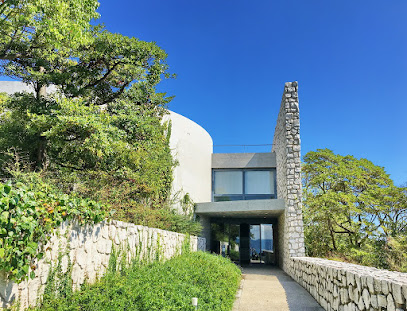
SPARKY'S Coffee
Discover the perfect blend of art and coffee at Sparky's Coffee, your tranquil retreat on Naoshima Island.
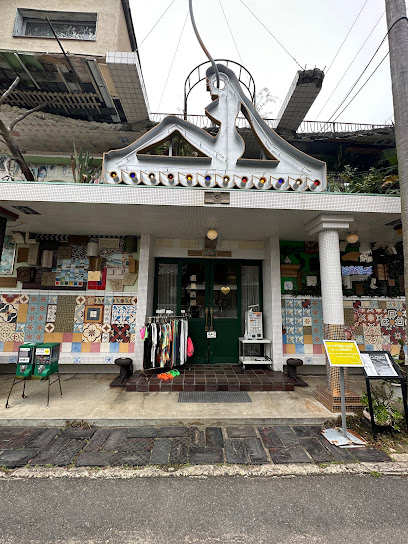
APRON CAFE
Discover the unique flavors of Naoshima at APRON CAFE, where culinary excellence meets artistic ambiance in a tranquil setting.

maimai
Experience the unique flavors of Japan at Maimai, Naoshima's beloved hamburger café, where art and cuisine harmoniously meet.

Essential bars & hidden hideouts
Cafe Salon Nakaoku
Discover the artistic charm and culinary delights of Cafe Salon Nakaoku in Naoshima, where every meal is a masterpiece.

Kon'nichiwa
Discover the tranquil ambiance and delicious offerings at Kon'nichiwa, Naoshima's beloved café for art lovers and tourists alike.

Cin.na.mon
Savor the essence of Japanese cuisine at Cin.na.mon, a charming cafe in the heart of Naoshima, where tradition meets modernity.

New Olympia (sushi)
Experience the essence of Japanese culinary art at New Olympia, Naoshima's premier sushi restaurant, where tradition meets innovation in every bite.

APRON CAFE
Discover the flavors of Naoshima at APRON CAFE, where local ingredients meet artistic inspiration in a cozy dining atmosphere.
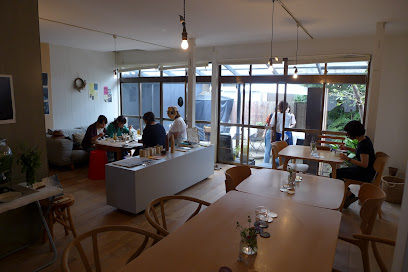
Ebisukamo
Discover the authentic taste of Japan at Ebisukamo, where traditional flavors meet serene island vibes in Naoshima.

Chikurin
Experience the authentic flavors of Japan at Chikurin, a charming izakaya in Naoshima, renowned for its exquisite dishes and warm hospitality.

Terrace Restaurant
Experience the best of Naoshima's culinary scene at Terrace Restaurant, where stunning views meet exquisite local cuisine.

Little Plum
Discover the flavors of Naoshima at Little Plum, where local ingredients meet a warm, inviting atmosphere for an unforgettable dining experience.

Luke's Pizza & Grill
Experience the best of Italian cuisine on Naoshima Island at Luke's Pizza & Grill, where every bite is a taste of Italy.

maimai
Discover Maimai: A must-visit hamburger cafe on Naoshima Island, blending delicious tastes with artistic vibes in a tranquil setting.

Café Ippo
Discover Café Ippo, a cozy restaurant in Naoshima offering authentic Japanese cuisine and a warm, welcoming atmosphere, perfect for travelers.

Shimacoya
Discover Shimacoya, a unique café and guest house in Naoshima offering coffee, books, and local crafts amidst a stunning artistic backdrop.
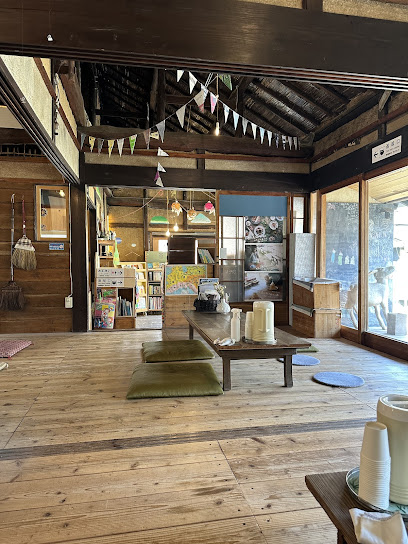
BAR Queen's-Q Naoshima
Discover the serene ambiance and exquisite drinks at BAR Queen's-Q Naoshima, the perfect retreat after exploring the island's art and culture.
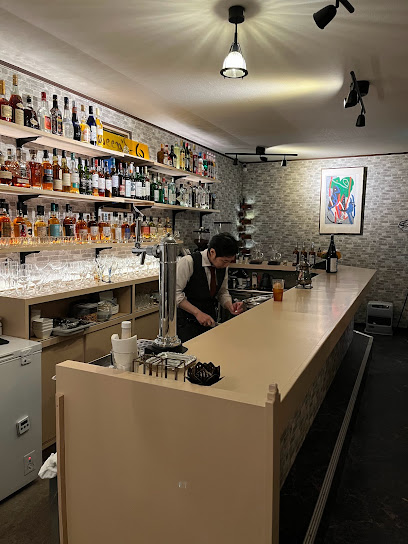
Naoshima Yokocho
Experience authentic Japanese cuisine at Naoshima Yokocho, an izakaya that captures the essence of Naoshima's culinary culture amidst stunning art and nature.

Local Phrases about Naoshima Island
-
- Helloこんにちは
[kon-ni-chi-wa] - Goodbyeさようなら
[sa-yo-u-na-ra] - Yesはい
[ha-i] - Noいいえ
[i-i-e] - Please/You're welcomeお願いします/どういたしまして
[o-na-ga-i-shi-ma-su/do-u-i-ta-shi-ma-shi-te] - Thank youありがとうございます
[a-ri-ga-to-u-go-za-i-ma-su] - Excuse me/Sorryすみません
[su-mi-ma-se-n] - How are you?お元気ですか?
[o-ge-n-ki-de-su-ka] - Fine. And you?元気です。あなたは?
[ge-n-ki-de-su.a-na-ta-wa] - Do you speak English?英語を話せますか?
[e-i-go-wo-ha-na-se-ma-su-ka] - I don't understandわかりません
[wa-ka-ri-ma-se-n]
- Helloこんにちは
-
- I'd like to see the menu, pleaseメニューを見せていただきたいです
[me-n-yu-u-wo-mi-se-te-i-ta-da-ki-ta-i-de-su] - I don't eat meat肉は食べません
[ni-ku-wa-ta-be-ma-se-n] - Cheers!乾杯!
[ka-n-pa-i] - I would like to pay, pleaseお会計をお願いします
[o-kai-ke-i-wo-o-na-ga-i-shi-ma-su]
- I'd like to see the menu, pleaseメニューを見せていただきたいです
-
- Help!助けて!
[ta-su-ke-te] - Go away!去ってください!
[sa-t-te-ku-da-sa-i] - Call the Police!警察を呼んで!
[ke-i-sa-tsu-wo-yon-de] - Call a doctor!医者を呼んで!
[i-sha-wo-yon-de] - I'm lost道に迷いました
[mi-chi-ni-ma-ya-wa-i-ma-shi-ta] - I'm ill体調が悪いです
[ta-i-chou-ga-wa-ru-i-de-su]
- Help!助けて!
-
- I'd like to buy......を買いたいです
[...wo-ka-i-ta-i-de-su] - I'm just looking見てるだけです
[mi-te-ru-da-ke-de-su] - How much is it?いくらですか?
[i-ku-ra-de-su-ka] - That's too expensive高すぎます
[ta-ka-su-gi-ma-su] - Can you lower the price?値引きしてもらえますか?
[ne-bi-ki-shi-te-mo-ra-e-ma-su-ka]
- I'd like to buy......を買いたいです
-
- What time is it?今何時ですか?
[i-ma-na-n-ji-de-su-ka] - It's one o'clock一時です
[i-chi-ji-de-su] - Half past (10)十時半です
[ju-u-ji-ha-n-de-su] - Morning朝
[a-sa] - Afternoon午後
[go-go] - Evening夕方
[yu-u-ga-ta] - Yesterday昨日
[ki-no-u] - Today今日
[kyo-u] - Tomorrow明日
[a-shi-ta] - 1一
[i-chi] - 2二
[ni] - 3三
[sa-n] - 4四
[shi] - 5五
[go] - 6六
[ro-ku] - 7七
[na-na] - 8八
[ha-chi] - 9九
[ku] - 10十
[ju-u]
- What time is it?今何時ですか?
-
- Where's a/the...?...はどこですか?
[...wa-do-ko-de-su-ka] - What's the address?住所は何ですか?
[ju-u-sho-wa-na-ni-de-su-ka] - Can you show me (on the map)?地図で見せてもらえますか?
[chi-zu-de-mi-se-te-mo-ra-e-ma-su-ka] - When's the next (bus)?次の(バス)はいつですか?
[tsu-gi-no(ba-su)wa-i-tsu-de-su-ka] - A ticket (to ....)チケット(....へ)
[chi-ke-t-to(...e)]
- Where's a/the...?...はどこですか?
History of Naoshima Island
-
Naoshima Island, located in the Seto Inland Sea, has a history that dates back to ancient times. Archaeological findings suggest that the island was inhabited during the Jomon period, roughly 14,000 to 300 BCE. Pottery shards, stone tools, and shell mounds unearthed on the island provide evidence of these early settlers who lived off the bounty of the sea.
-
During Japan's feudal era, Naoshima became part of the domain controlled by the powerful Mori Clan. The island was strategically important due to its location in the Seto Inland Sea, a vital maritime route. The Mori Clan fortified the island and used it as a base to control sea traffic and collect taxes from passing ships.
-
The Meiji Restoration in 1868 marked the end of the feudal system and the beginning of modern Japan. Naoshima, like much of Japan, experienced significant changes during this period. The island began to industrialize, and a copper refinery was established in 1917, which became a significant economic driver for the local community and remained in operation for many decades.
-
In the late 1980s and early 1990s, Naoshima underwent a dramatic transformation. The Benesse Corporation, led by Soichiro Fukutake, envisioned the island as a hub for contemporary art and architecture. Collaborating with renowned artists and architects like Tadao Ando, they established the Benesse House Museum in 1992, which integrated art spaces with a hotel. This marked the beginning of Naoshima's identity as an 'Art Island.'
-
The Benesse Art Site Naoshima project expanded over the years, adding iconic installations such as Yayoi Kusama's 'Pumpkin' sculpture and the Chichu Art Museum, which houses works by Claude Monet, James Turrell, and Walter De Maria. The island's unique blend of nature, art, and architecture has since attracted visitors from around the world, cementing its reputation as a cultural destination.
-
Naoshima's transformation into an art island has also prioritized sustainability and community involvement. The Benesse Corporation and local government have implemented various initiatives to preserve the island's natural beauty and promote sustainable tourism. Local residents are actively involved in the island's cultural activities, ensuring that the development benefits the community while maintaining Naoshima's unique charm.
Naoshima Island Essentials
-
Naoshima Island is part of the Kagawa Prefecture and can be accessed by ferry. The most common route is via Uno Port in Okayama Prefecture. From Uno Station, it's a short walk to Uno Port where you can catch a ferry to either Miyanoura Port or Honmura Port on Naoshima. Alternatively, you can take a ferry from Takamatsu Port in Kagawa Prefecture. The ferry ride typically takes around 20-30 minutes.
-
Naoshima Island is small, and the best way to explore it is by bicycle or on foot. Bicycles can be rented at Miyanoura Port and Honmura Port. There are also local buses that connect different parts of the island, including the major art sites. Taxis are available but can be expensive for short distances. Walking is highly recommended as many attractions are within a reasonable distance from each other.
-
The official currency in Japan is the Japanese Yen (JPY). Credit cards are accepted at most hotels, restaurants, and larger shops on Naoshima, but it's advisable to carry cash for smaller establishments and local markets. ATMs are available at Miyanoura Port and a few other locations on the island. Ensure you have enough cash before arriving as ATM availability can be limited.
-
Naoshima Island is generally very safe for tourists. Crime rates are low, and violent crime is almost non-existent. However, it is always wise to take standard precautions such as keeping an eye on your belongings in crowded areas. There are no specific high-crime areas targeting tourists.
-
In case of an emergency, dial 119 for fire and ambulance services, and 110 for police. There is a medical clinic on the island, but for more serious health issues, you may need to be transported to a larger medical facility on the mainland. It's advisable to have travel insurance that covers medical emergencies. Basic first aid supplies can be purchased at local pharmacies.
-
Fashion: Do wear comfortable walking shoes as you'll be doing a lot of exploring. Don't wear overly revealing clothing, especially in more traditional or religious areas. Religion: Do respect local customs and traditions. Remove your shoes when entering temples and some traditional buildings. Public Transport: Do be punctual as Japanese public transport is known for its timeliness. Don't talk loudly or make phone calls on public transport. Greetings: Do greet people with a slight bow or a polite nod. Handshakes are less common but acceptable. Eating & Drinking: Do try local delicacies and follow Japanese dining etiquette. Don't tip, as it is not customary in Japan and can be considered rude.
-
To experience Naoshima like a local, visit the island's public baths, such as I Love Yu, which offer a unique blend of art and relaxation. Engage with locals at small eateries and cafes where you can enjoy traditional Japanese hospitality. Take your time exploring the many art installations and museums, and don't miss the chance to visit the Benesse House Museum. For a special experience, visit the island during the Setouchi Triennale, an art festival held every three years, which attracts artists and visitors from around the world.
Trending Landmarks in Naoshima Island
Nearby Cities to Naoshima Island
-
Things To Do in Osaka
-
Things To Do in Nara
-
Things To Do in Kyoto
-
Things To Do in Nagoya
-
Things To Do in Kanazawa
-
Things To Do in Fukuoka
-
Things To Do in Ulsan
-
Things To Do in Busan
-
Things To Do in Gyeongju
-
Things To Do in Pohang
-
Things To Do in Daegu
-
Things To Do in Andong
-
Things To Do in Tokyo
-
Things To Do in Suncheon
-
Things To Do in Daejeon











